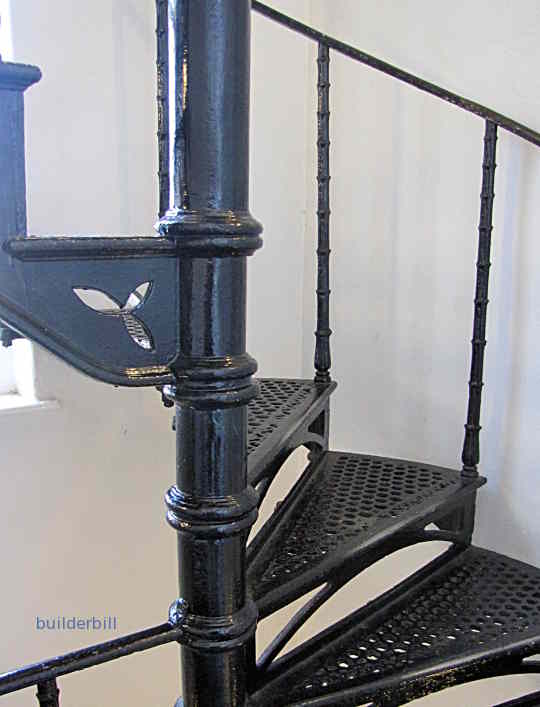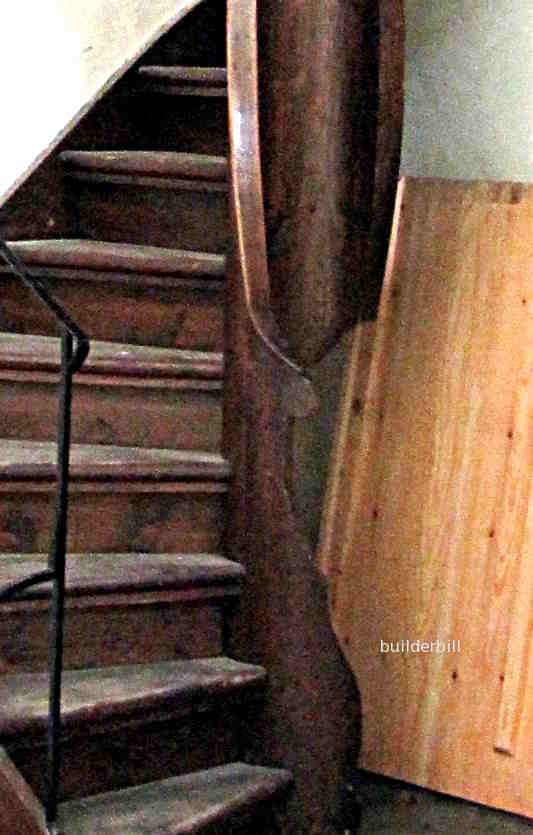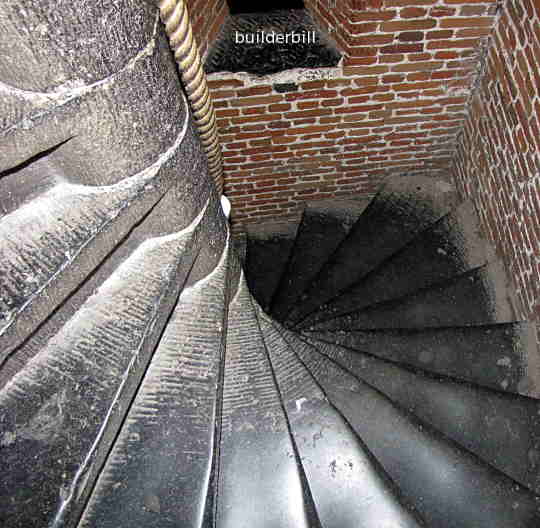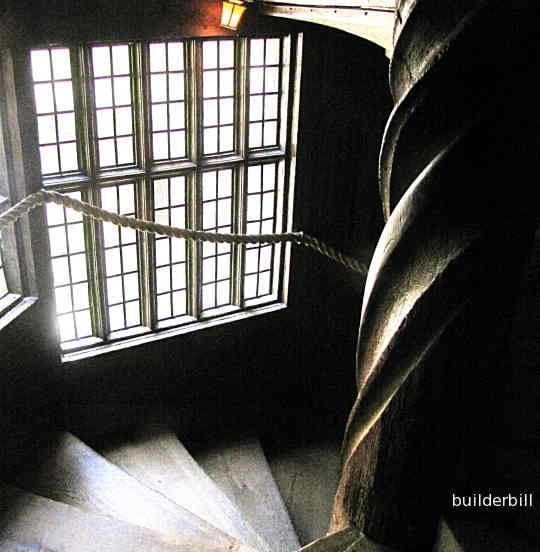 |
|||||||
Graphical Construction Glossary >> stairs. >> general >> Spiral Newel
Simply called a newel, the central member that takes most of the load in a spiral stair is almost invariably these days based on steel, which has strength, convenience and compactness in it's favour. So to be different on this page here are some alternatives. Above is a Victorian era cast iron mass produced spiral stair.
In this instance the treads are taking a lot of the weight of this stone spiral stair in the Medieval Clock Tower in Bruges, Belgium. Without a doubt though the central cylinder will contain wrought iron bars to add strength to the structure. Note the fact that in spite of the enormous amount of extra work involved, the masons provided each step with a toe space. Hanging a rope down the inside was a common way of providing some grip, rather than a complicated handrail, but for the most part these early spiral stairs had no handrails.
Another newel out of timber. This time solid about 12" or 300mm diameter, with spiral grooves cut into it. It may be that these grooves were intended as some sort of grip instead of a handrail, but I didn't use them. I took the outside line as most people do when walking on these stairs. If you didn't find exactly what you are looking for try this search tool that will search the site and the web. "What can be added to the happiness of a man who is in health, out of debt, and has a clear conscience? "When we build, let us think that we build for ever."John Ruskin 1819-1900 |
Hire Equipment  Furniture Fittings - Architectural Hardware - Electronic Locking Systems - Technical Hardware BuilderBill sponsorship Glossary Pages.Roof Glossary and Roofing Formwork Glossary and other tempory work. Hand Tools Glossary Power Tools Glossary Asbestos Glossary Woodwork Glossary Stair Glossary Concrete Glossary Masonry Glossary doors Glossary BuilderBill Books Building Maths  Stair Design  Asbestos Book |
||||||
|
|
|||||||
|
Please Note! The information on this site is offered as a guide only! When we are talking about areas where building regulations or safety regulations could exist,the information here could be wrong for your area. It could be out of date! Regulations breed faster than rabbits! You must check your own local conditions. Copyright © Bill Bradley 2007-2012. All rights reserved. |
|||||||



